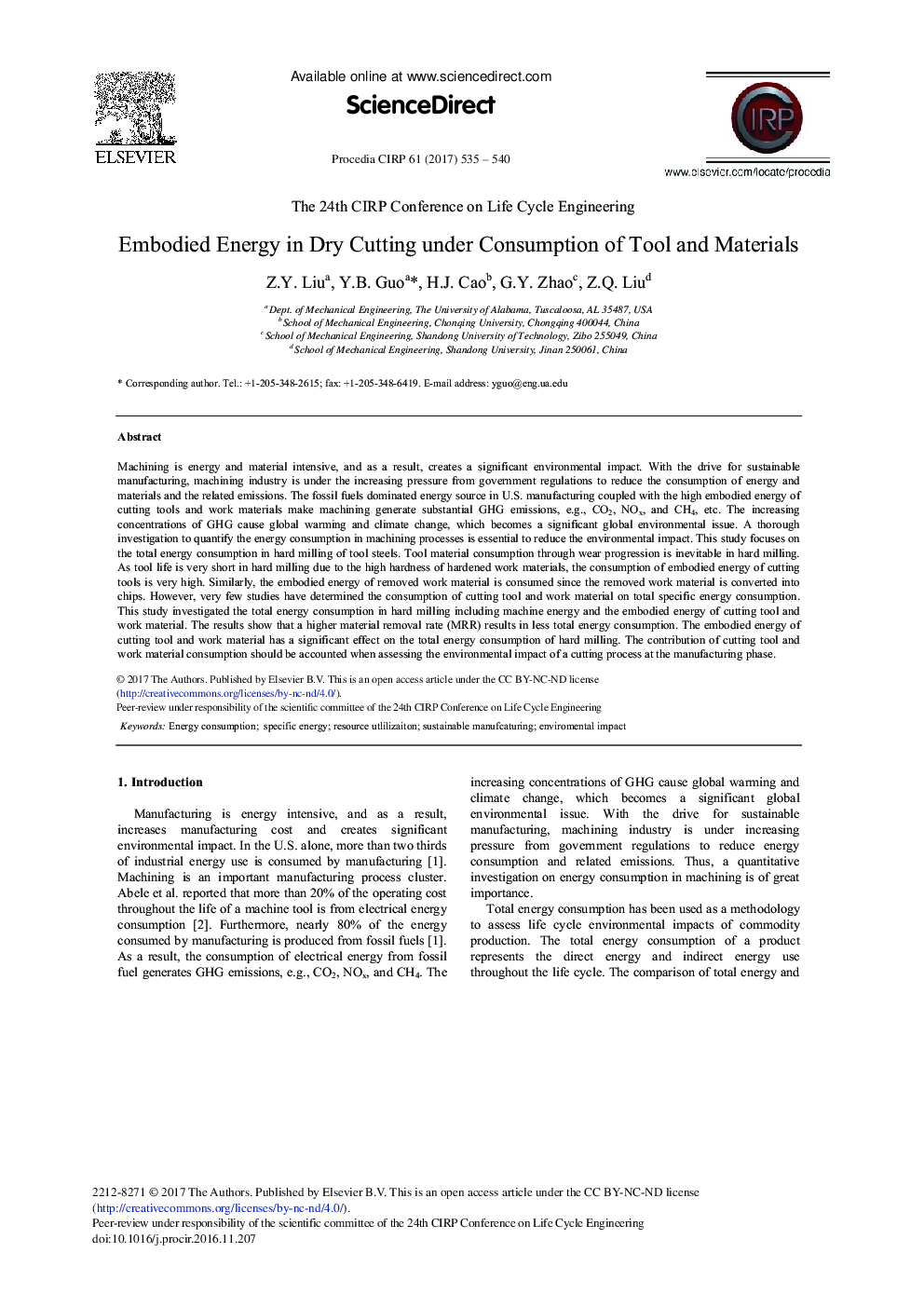| کد مقاله | کد نشریه | سال انتشار | مقاله انگلیسی | نسخه تمام متن |
|---|---|---|---|---|
| 5470563 | 1519291 | 2017 | 6 صفحه PDF | دانلود رایگان |
عنوان انگلیسی مقاله ISI
Embodied Energy in Dry Cutting under Consumption of Tool and Materials
ترجمه فارسی عنوان
انرژی حرارتی در برش خشک با استفاده از ابزار و مواد
دانلود مقاله + سفارش ترجمه
دانلود مقاله ISI انگلیسی
رایگان برای ایرانیان
موضوعات مرتبط
مهندسی و علوم پایه
سایر رشته های مهندسی
مهندسی صنعتی و تولید
چکیده انگلیسی
Machining is energy and material intensive, and as a result, creates a significant environmental impact. With the drive for sustainable manufacturing, machining industry is under the increasing pressure from government regulations to reduce the consumption of energy and materials and the related emissions. The fossil fuels dominated energy source in U.S. manufacturing coupled with the high embodied energy of cutting tools and work materials make machining generate substantial GHG emissions, e.g., CO2, NOx, and CH4, etc. The increasing concentration of GHG causes global warming and climate change, which becomes a significant global environmental issue. A thorough investigation to quantify the energy consumption in machining processes is essential to reduce the environmental impact. This study focuses on the total energy consumption in hard milling of tool steels. Tool material consumption through wear progression is inevitable in hard milling. As tool life is very short in hard milling due to the high hardness of hardened work materials, the consumption of embodied energy of cutting tools is very high. Similarly, the embodied energy of removed work material is consumed since the removed work material is converted into chips. However, very few studies have determined the consumption of cutting tool and work material on total specific energy consumption. This study investigated the total energy consumption in hard milling including machine energy and the embodied energy of cutting tool and work material. The results show that a higher material removal rate (MRR) results in less total energy consumption. The embodied energy of cutting tool and work material has a significant effect on the total energy consumption of hard milling. The contribution of cutting tool and work material consumption should be accounted when assessing the environmental impact of a cutting process at the manufacturing phase.
ناشر
Database: Elsevier - ScienceDirect (ساینس دایرکت)
Journal: Procedia CIRP - Volume 61, 2017, Pages 535-540
Journal: Procedia CIRP - Volume 61, 2017, Pages 535-540
نویسندگان
Z.Y. Liu, Y.B. Guo, H.J. Cao, G.Y. Zhao, Z.Q. Liu,
